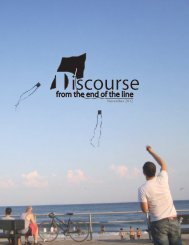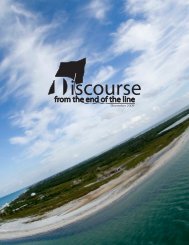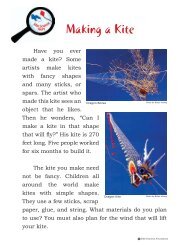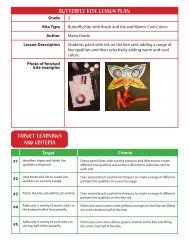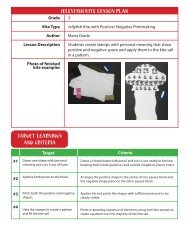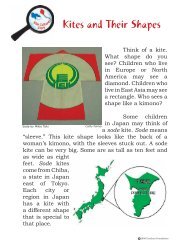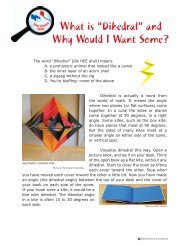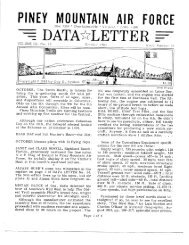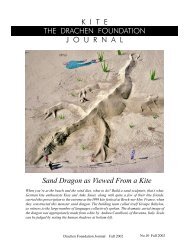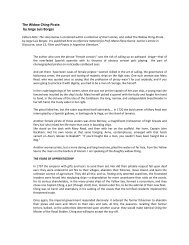Discourse Issue 9.pdf - Drachen Foundation
Discourse Issue 9.pdf - Drachen Foundation
Discourse Issue 9.pdf - Drachen Foundation
Create successful ePaper yourself
Turn your PDF publications into a flip-book with our unique Google optimized e-Paper software.
creates the need to elevate the camera at a<br />
higher altitude than when using a fish eye<br />
lens and therefore involves a greater degree<br />
of difficulty.<br />
RESULTS<br />
The weather conditions during this<br />
expedition did not allow us to fly the kite<br />
and rig above the Pyramid of the Seven<br />
Dolls and get aerial photos of this structure<br />
with the 35mm lens. The scattered<br />
rainstorms and thunderstorms in the vicinity<br />
and at the archeological site reduced the<br />
windows of opportunity to make the<br />
complete flights possible. Nevertheless, we<br />
took aerial photos of the Sun Dial and we<br />
made the topographical survey of the<br />
Pyramid of the Seven Dolls to obtain the<br />
data required to create a digital elevation<br />
model of the pyramid. Later we processed<br />
this information with ArcGis software and<br />
obtained the following preliminary model:<br />
Seven Dolls with the 35mm lens and to be<br />
able to finish the digital, three-dimensional<br />
model of the Observatory or Pyramid of the<br />
Seven Dolls at Dzibilchaltun.<br />
To observe the third dimension with the use<br />
of a stereoscope or stereoscopic lenses, we<br />
selected pairs of photographs from the<br />
different KAP surveys done at this site. One<br />
pair was obtained from this expedition and<br />
the rest from previous years. After several<br />
experiments with different pairs of images,<br />
we noticed that the elevation or third<br />
dimension is appreciated through the<br />
stereoscopic lenses regardless of the lens<br />
used to obtain the images. (See page 29 for<br />
examples of photograph pairs.)<br />
This proves that KAP can be used as a<br />
remote sensing surveillance technique to<br />
create high resolution 3D images in analog<br />
format and provides the evidence of its<br />
potential use in creating digital models of<br />
elevation.<br />
HOLBOX, QUINTANA ROO, MÉXICO<br />
JULY 23RD - 29TH 2010<br />
The activities during this week were focused<br />
on evaluating the influence of ocean<br />
processes and environmental conditions on<br />
local wind patterns, on testing the<br />
applications of KAP to document shoreline<br />
conditions in the surroundings of Holbox<br />
Island, and on testing KAP with a digital SLR<br />
camera in the Whale Shark observation area<br />
of Yum-Balam Reserve, Quintana Roo,<br />
Mexico.<br />
Digital elevation model of the Pyramid of the Seven Dolls.<br />
We plan to go back to this archeological<br />
site during the early spring of 2011 in order<br />
to take aerial photos of the terrace of the<br />
An important goal for the technical<br />
development of KAP applications was to<br />
test a new rig with a Nikon D90 and obtain<br />
geo-referenced aerial photographs. The<br />
importance of this experiment was to test<br />
potential applications of KAP with<br />
geographical information systems for the<br />
exploration of marine environments.<br />
30





